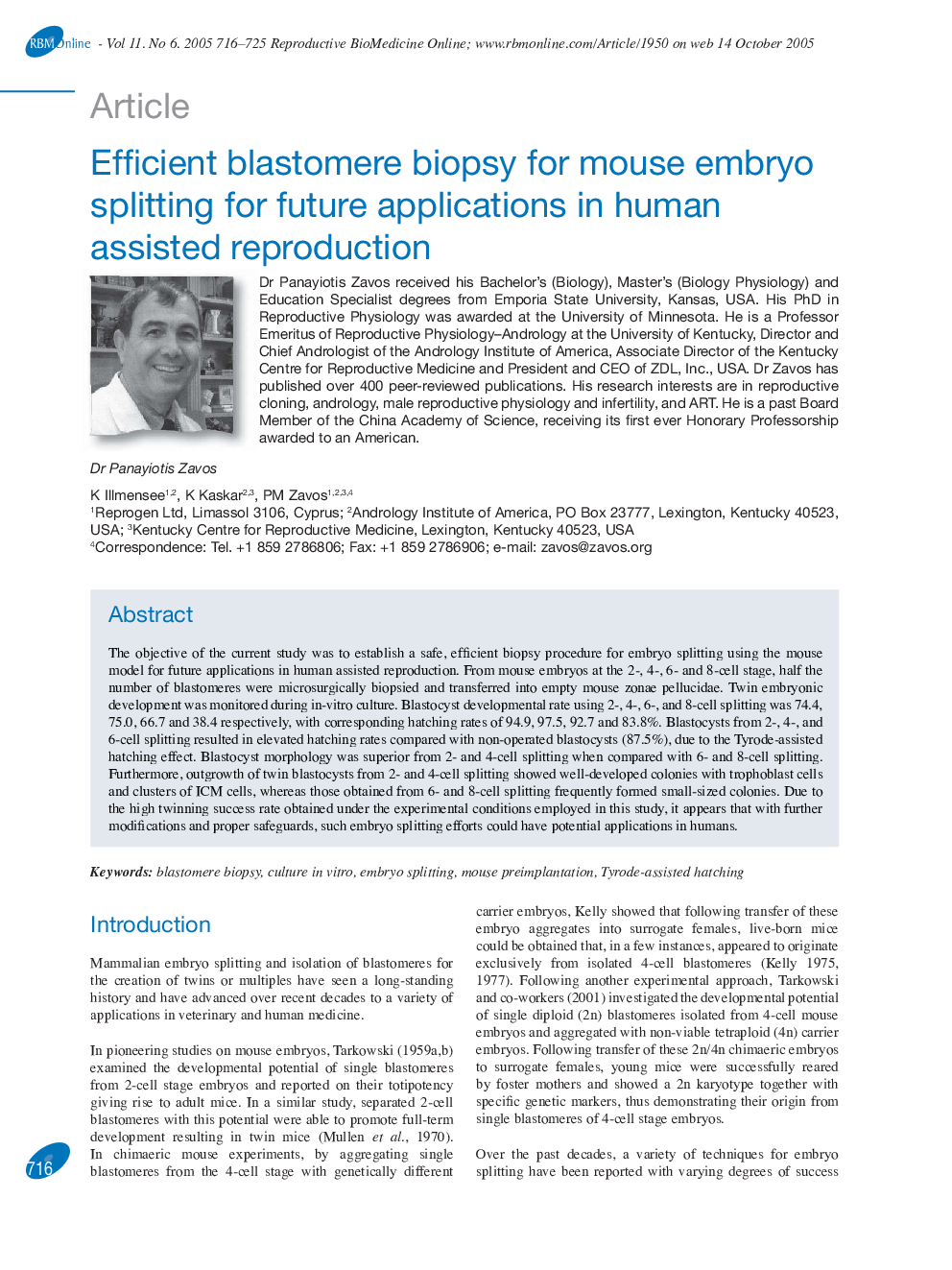| Article ID | Journal | Published Year | Pages | File Type |
|---|---|---|---|---|
| 9334837 | Reproductive BioMedicine Online | 2005 | 10 Pages |
Abstract
The objective of the current study was to establish a safe, efficient biopsy procedure for embryo splitting using the mouse model for future applications in human assisted reproduction. From mouse embryos at the 2-, 4-, 6- and 8-cell stage, half the number of blastomeres were microsurgically biopsied and transferred into empty mouse zonae pellucidae. Twin embryonic development was monitored during in-vitro culture. Blastocyst developmental rate using 2-, 4-, 6-, and 8-cell splitting was 74.4, 75.0, 66.7 and 38.4 respectively, with corresponding hatching rates of 94.9, 97.5, 92.7 and 83.8%. Blastocysts from 2-, 4-, and 6-cell splitting resulted in elevated hatching rates compared with non-operated blastocysts (87.5%), due to the Tyrode-assisted hatching effect. Blastocyst morphology was superior from 2- and 4-cell splitting when compared with 6- and 8-cell splitting. Furthermore, outgrowth of twin blastocysts from 2- and 4-cell splitting showed well-developed colonies with trophoblast cells and clusters of ICM cells, whereas those obtained from 6- and 8-cell splitting frequently formed small-sized colonies. Due to the high twinning success rate obtained under the experimental conditions employed in this study, it appears that with further modifications and proper safeguards, such embryo splitting efforts could have potential applications in humans.
Related Topics
Health Sciences
Medicine and Dentistry
Obstetrics, Gynecology and Women's Health
Authors
K Illmensee, K Kaskar, PM Zavos,
